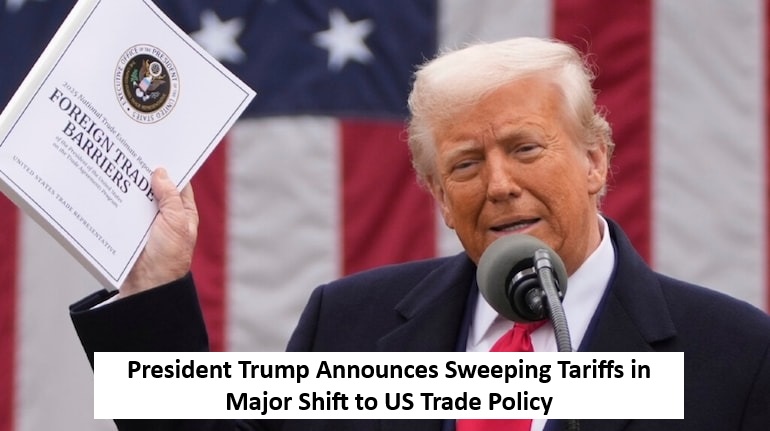
In a dramatic Rose Garden ceremony, President Donald Trump introduced a broad set of new tariffs, declaring it “liberation day” for American workers. The policy marks a historic escalation in US trade enforcement and is expected to impact global economic dynamics significantly.
Universal 10% Tariff and Reciprocal Penalties on 60 Nations
Effective April 5, the US will impose a universal 10% tariff on all imported goods. Additionally, 60 countries deemed "worst offenders" in contributing to trade imbalances will face targeted tariffs ranging from 10% to 50%, layered atop existing duties.
China: New 34% tariff added to the existing 20% (total 54%)
European Union: 20%
Japan: 24%
Vietnam: 46%
Laos: 48%
Cambodia: 49%
Saint Pierre and Miquelon: 50%
Exceptions and Strategic Industry Exemptions
Mexico and Canada, while not entirely exempt, avoid the steepest tariffs and remain under the framework of the US-Mexico-Canada Agreement. The UK received only a 10% duty, potentially easing the path toward a future bilateral trade deal.
Certain critical sectors, such as automobiles, semiconductors, pharmaceuticals, and rare minerals, were spared immediate penalties. However, investigations are ongoing, and future tariffs could target these areas.
Implementation Timeline and Legal Grounds
The universal 10% tariff takes effect at 12:01 a.m. on Saturday, April 5. The additional reciprocal duties on the targeted countries begin Thursday, April 9. The administration cited emergency powers tied to national security and economic interests to justify the swift imposition.
White House Explains Strategic Goals
Trump officials outlined objectives behind the move:
Reduce long-standing trade deficits
Encourage reshoring of manufacturing
Penalize unfair trade practices
Raise revenue to support tax cut-driven deficits
While the executive order allows for future negotiations, any changes to the tariff regime are solely at the discretion of the president. Relief will be considered only for nations taking “significant corrective steps.”
Warnings of Retaliation and Rising Tensions
The administration warned that any retaliatory trade actions would be met with additional tariffs, setting the stage for potential global trade conflicts. Officials are prioritizing tariff enforcement over new trade agreements for now.
Reactions Split Amid Fears of Global Impact
Supporters praised the move as a long-promised protection for US industry. Critics, however, argue that the aggressive stance may increase consumer prices, disrupt markets, and strain diplomatic relationships.
As the policy rolls out, global leaders and economists are watching closely for its economic repercussions, marking a significant pivot in America’s trade doctrine.
Read More: World Bank Approves 700 Million Dollars for Pakistan to Boost Economic Stability and Public Services

 Share
Share



